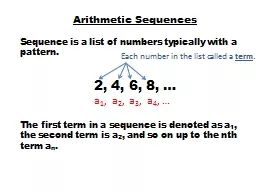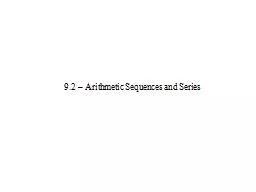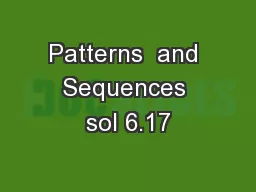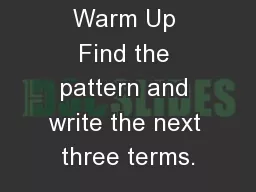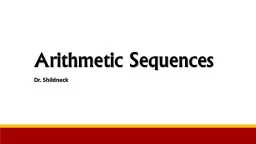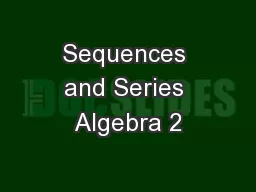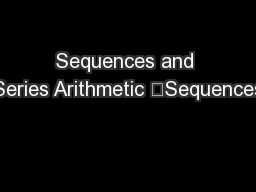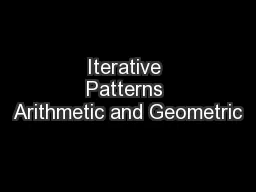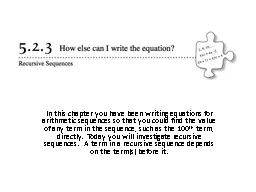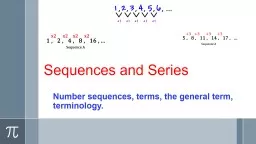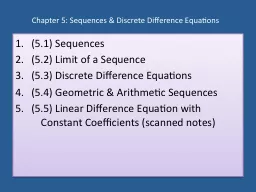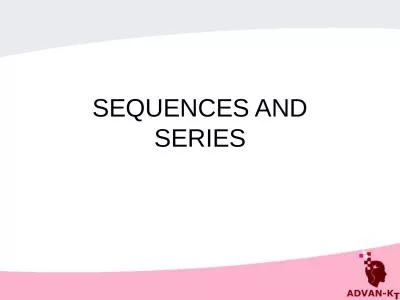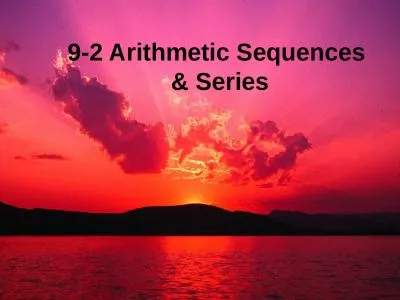PPT-Arithmetic Sequences Sequence is a list of numbers typically with a pattern.
Author : kittie-lecroy | Published Date : 2018-11-15
2 4 6 8 The first term in a sequence is denoted as a 1 the second term is a 2 and so on up to the nth term a n Each number in the list called a term
Presentation Embed Code
Download Presentation
Download Presentation The PPT/PDF document "Arithmetic Sequences Sequence is a list ..." is the property of its rightful owner. Permission is granted to download and print the materials on this website for personal, non-commercial use only, and to display it on your personal computer provided you do not modify the materials and that you retain all copyright notices contained in the materials. By downloading content from our website, you accept the terms of this agreement.
Arithmetic Sequences Sequence is a list of numbers typically with a pattern.: Transcript
Download Rules Of Document
"Arithmetic Sequences Sequence is a list of numbers typically with a pattern."The content belongs to its owner. You may download and print it for personal use, without modification, and keep all copyright notices. By downloading, you agree to these terms.
Related Documents

